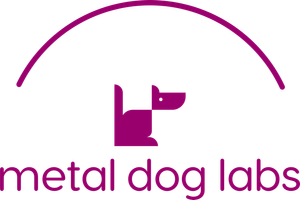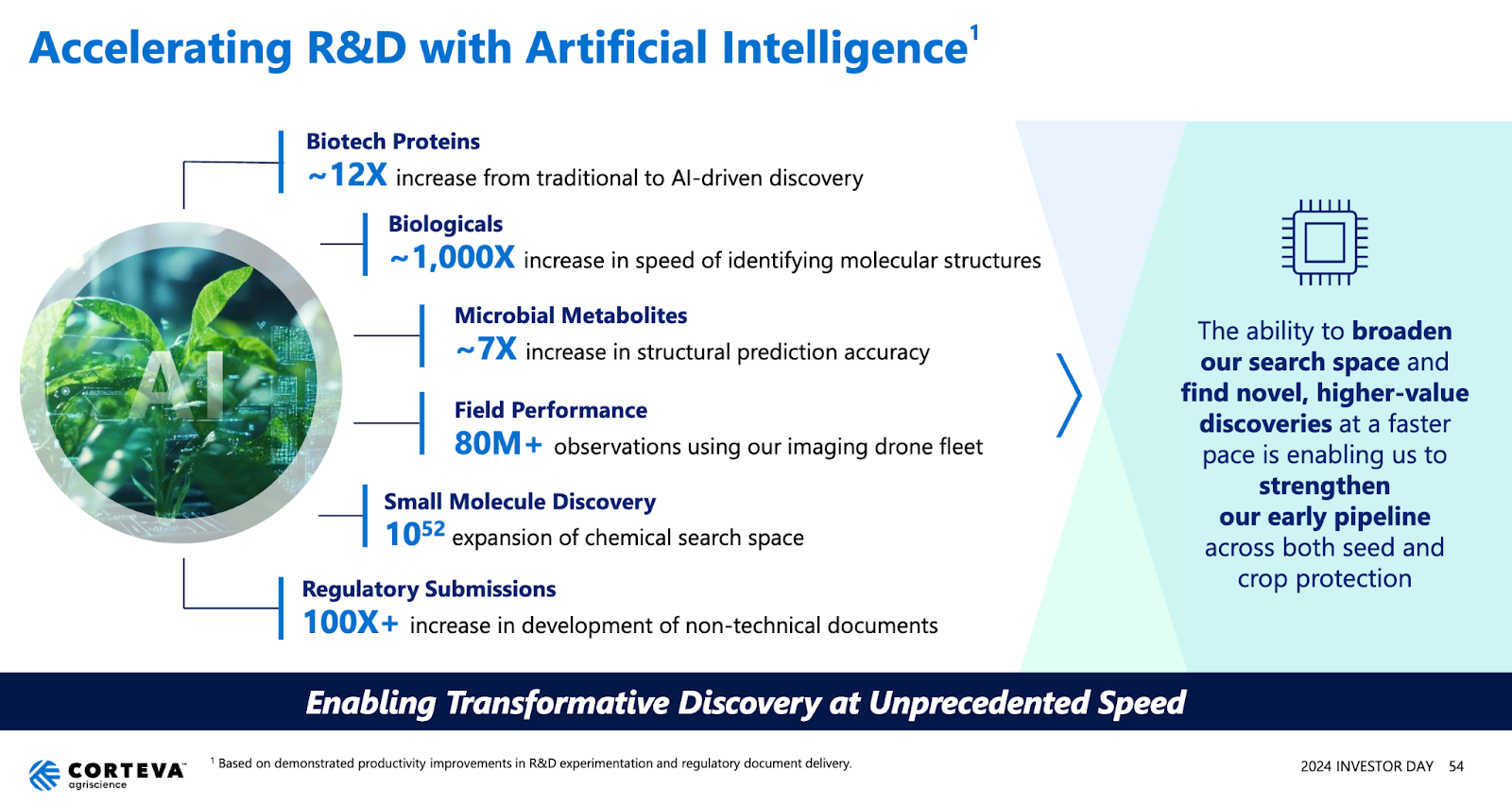November happenings with commentary from SFTW
Starting from this edition, SFTW is starting a new experiment with sponsors. If you are an AgriTech or FoodTech business who wants to spread your message to a technology forward audience, you can be a sponsor (reply to this email if you are interested). It is a way to build and strengthen your brand among AgriFood and Technology leaders, practitioners, researchers, students, and investors.
Note: This is the only time when paid subscribers will see an ad. Starting from the next edition, there will be two separate newsletters with similar content. Paid members will get their newsletter about 24 hours before the free subscribers. Any ads will be in the free version and not the paid version of the newsletter.
15% discount still available for annual subscriptions
Artificial Intelligence & Digital Transformation
Corteva’s Investor Day Presentation. And CAiRL, anyone?
Corteva gave a compelling presentation on investor day in New York on November 19th, 2024. Chief Technology Officer, Sam Eathington highlighted the use of Ai in accelerating R&D. Corteva also released a Gen AI based agent with the weird name CAiRL (the i between the A and R makes it sound like CAIRL!
Project CAIRL is the first generation of Corteva’s artificial intelligence assistant that leverages the latest large language model (LLM) technology and Corteva’s agronomy knowledge. This combination has produced a GenAI agronomy assistant that is highly accurate on benchmarks such as the Certified Crop Advisor exam.” Maybe G. Bailey Stockdale should add the agent to his benchmark test.

Image from Corteva’s Analyst Presentation
Who can make this product? AI can help you find out.
When I worked on a GenAI project to find alternative ingredients for a food product, it was challenging to figure out which suppliers had the right ingredients, which met your need, and it was an even bigger challenge to figure out how to bench test it, and how to get it incorporated in your product.
Within the food industry, there is a lot of co-manufacturing and private-label manufacturing. When you go to Trader Joe’s, all the products are branded Trader Joe’s but are manufactured by or sourced from a large number of suppliers and manufacturers.
Keychain is digitizing and creating a data set of manufacturing to search through more than a million SKUs and find the right co-manufacturers to produce them. Keychain uses AI to analyze packaging and ingredients in the description to understand the processing and packaging equipment needed to manufacture it, and then ties it to more than 20,000 manufacturers on the platform.
Weather Intelligence key to navigating unpredictable climate
Weathertrends360 (Wt360) predicts year-ahead temperate metrics (GDD, temps, precipitation etc.) across 32 million grid points (for every mile on earth) and creates a statistical 24-climate cycle model. Their forecasts are very stable, and can be used to answer questions about agronomic practices and their timing, and also impact on seasonal categories at retail.
Space roombas
You want to make sure you are getting your StarLink signal all the time, and for a long time. With the number of satellites going up every year, satellite traffic and debris, satellite life span and service are real challenges. Starfish Space recently raised $ 29 million to launch satellite servicing spacecraft. They use a combination of autonomy and robotics technologies to service satellites, elongate their life spans, and do disposal in space.
BCG report highlights challenges and opportunities with tech adoption
A survey of US farm owners and managers found that functional and emotional needs play a key role in their purchasing decisions—needs that aren’t evident when agribusinesses segment target customers by farm size or crop type.
Our analysis also discovered that growers fall into seven segments, and those in each segment can be identified by shared characteristics, such as age, succession plans, and attitudes toward sustainability.

Some key takeaways from the report.
- Growers are repurchased trusted technology solutions rather than trying new ones.
- Reliability, soil stewardship, and control are top concerns among growers when buying new solutions.
Climate and sustainability
Corteva doubles down on Sustainable Aviation Fuel
A number of countries around the world have, or are in the process of implementing, mandates or tax incentives to promote the decarbonization of the aviation sector. In the EU a SAF mandate begins in 2025 that will require fuel uplift at EU airports to contain at least 20% SAF by 2035 and 70% by 2050.
To help meet this demand, Corteva and bp have executed a non-binding memorandum of understanding, with the intent of forming a JV that would aim to progressively scale up volume, reaching delivery of one million metric tons per year of biofuel feedstocks for SAF production by the mid-2030s.
Corteva plans to contract with farmers in North and South America, and Europe, to grow proprietary Corteva mustard seed, sunflower and canola feedstocks well-suited for SAF production. These crops are integral to large scale agriculture around the world. The JV would aim to introduce new cropping systems to produce oil that meets EU RED III criteria, and qualifies for US Low Carbon Intensity policy incentives, while creating a new revenue stream for farmers.

From Corteva’s Investor Day presentation (2024)
Good money after bad money or is this real?
Sustainability focused startup Klim recently raised $ 22 million to quantify emissions removals and reductions, and plan to layer in a financial services layer to its platform. Startups like ReGrow have raised $ 64 million, and Indigo Ag’s carbon programs have raised astronomical amounts of capital, with not much to show about. I have been quite skeptical about this space in open field agriculture. I am a bit surprised by the large’ish raise by Klim.
I hope this is not a case of good money being thrown after bad money.
The partnerships keep coming
I guess I don’t understand the potential of this space very well. Truterra and Indigo Ag have formed a collaboration to expand access to registry based credit opportunities through Indigo’s carbon program and connect them with ag retailers in the Truterra network to expand their Scope 3 programs, which want to reduce emissions within their grain and animal ingredient supply chains.
Satellites reveal abrupt drop in global freshwater levels
Agriculture is the largest user of freshwater (70%). I have often said access to freshwater will be the defining issue of the 21st century. A team of scientists have found that the freshwater total amount dropped abruptly starting in May 2014 and has not recovered. Water is already putting significant pressure on agriculture in California (SGMA), western Kansas, and vast swaths of Asia, Africa, and Russia. The number of acres of farmland in California is dropping and moving to Peru for specific crops like blueberries.

Image from Seed Daily
Robotics and Automation
Harvesting Robot Market to surpass $ 48 billion by 2032
The harvesting robot market is rapidly growing, driven by labor shortages and technological advancements. Innovations like IoT integration enhance efficiency and precision, with leading robots transforming agricultural practices.
This shift towards automation is crucial for modern farming's sustainability and productivity, especially due to significant labor challenges. We see it in the data with the large number of harvesting robot companies based on the Mixing Bowl report published before FIRA. Many of these companies might go out of business, or will get acquired over the coming 18-24 months.

Image source: The Mixing Bowl Crop Robotics report (2024)
Hylio launches new advanced agri-drone system
Autonomous Crop treatment drone maker has launched a new ag-drone, the HYL-150 ARES for heavy use ag-drone operators. Here are the key specs. It is a period of time before drones can be used for more situations than just difficult to get to areas. Unit economics has to work.

Image source: Hylio Website
According to some drone service providers, “popularity is growing for small patches of ground that are troublesome to reach with a ground-sprayer” and “drones have covered 200-acre fields” and within 5 years
between farmers owning one or having us apply products on some land, I think it will be 100%,”
Companies (The Andersons) are even designing new products for aerial applications,
Aero-Blitz® is a specialized micronutrient blend specifically designed for aerial application via drones, airplanes, and helicopters on row and field crops. This blend of micronutrients is designed to help mitigate midseason stress to help boost yields at harvest. The Aero product line was designed to have low-use rates, making it ideal for aerial applications by drone, helicopter or plane.
5 ways to prevent robotic automation downtime (from Kawasaki Robotics)
This is for manufacturers (for example, OEMs) or large agribusiness operations who will use a fleet of robots in the future.
1. Understand the maintenance manual
2. Utilize tools to predict maintenance cycles
3. Be observant
4. Stock spare parts
5. Hire a skilled programmer
You can use GenAI and other AI tools to solve problems 1, 2, and 3, which can help you do four.
Timeline to adoption of autonomy
We talk a lot about autonomy at SFTW. But how long will it take to get to full autonomy? I believe it will be an evolution and not a revolution, as we knock down one use case after another. According to Colin Hurd, founder of SmartAg, we are a lot closer to one person being able to run four to five machines at the same time, before we move to coordinated fleets, multi-machine, in-field coordination with people on-site.
Where are the AgTechnicians?
As we talk about more robots, more automation, more smart machines, we will need a team of technicians and support people to support and service all this fancy equipment. There are not a lot of programs today to train the next generation of talent, and create employment opportunities. AGCO is partnering with local technical colleges, vocational schools, and AGCO dealerships to create a NexTECH program to alleviate a critical need and properly support end users.
Inputs
USDA reports decline in irrigated farms and water use
With the water issues I talked about earlier in this edition, it is not surprising. According to the recently published 2023 Irrigation and Water Management Survey, the number of farms utilizing irrigation, the acreage of land irrigated, and the total water applied for irrigation have all seen a decline since 2018.
The survey revealed that there were 212,714 farms across the United States managing 53.1 million irrigated acres, applying a total of 81 million acre-feet of water in 2023. This marks a decrease from 2018, when 231,474 farms reported 55.9 million irrigated acres and 83.4 million acre-feet of water usage.
Bayer and Netafim expand digital irrigation collaboration targeted for horticulture
Bayer has a data collection tool within horticulture called HortiView. Netafim has some of the most sophisticated tools for precision irrigation management. It makes sense for Bayer and Netafim to collaborate and bring their strengths to the table.
Can we see more of this collaboration?
On a related note, Sarah Nolet uses a water tech company, to talk about how to think about business models. As usual, this is fantastic. Just go read the whole thing.
Research finds brand new mode of nitrogen action for crops
Conducted by the University of Wisconsin-Madison, Purdue University and Pivot Bio, the study shows that gene-edited microbes can fix nitrogen from the air and feed it to cereal plants’ roots, providing the essential nutrient to crops. The study highlights PROVEN® 40, Pivot Bio’s second-generation corn product, which introduces the first new mode of nitrogen action this century. It includes lab and field evidence of nitrogen fixation.
Used equipment inventory climbs but declining interest rates & higher commodity prices might change it
Farmers are delaying purchasing decisions and waiting for clarity on the economic environment and commodity prices.
According to Moving Iron podcast host Casey Seymour,
I think we’re going to be in the middle of 2026 before we level out into a new normal.I’m anticipating a very active auction time frame through December where if you have the money, you’re going to be able to get some bargains. And I think that will hold true for the next two years.
Corteva Unveils Breakthrough in Drought Resistant Wheat
Hybrid seeds, created by crossing two genetically different parents, have been used for decades by corn and soy farmers as a way to produce more resilient, higher yielding plants. However, due to the relatively complex genetics of wheat, progress on creating a hybrid has been slow.
Corteva is hoping its new hybrid, non-GMO seeds can be a spark as wheat growers look to get the most out of their crops amid a changing climate and growing demand for the grain.

From Corteva’s 2024 Investor day presentation
Software is Feeding the World is a reader-supported publication. To receive new posts and support my work, consider becoming a free or paid subscriber.


